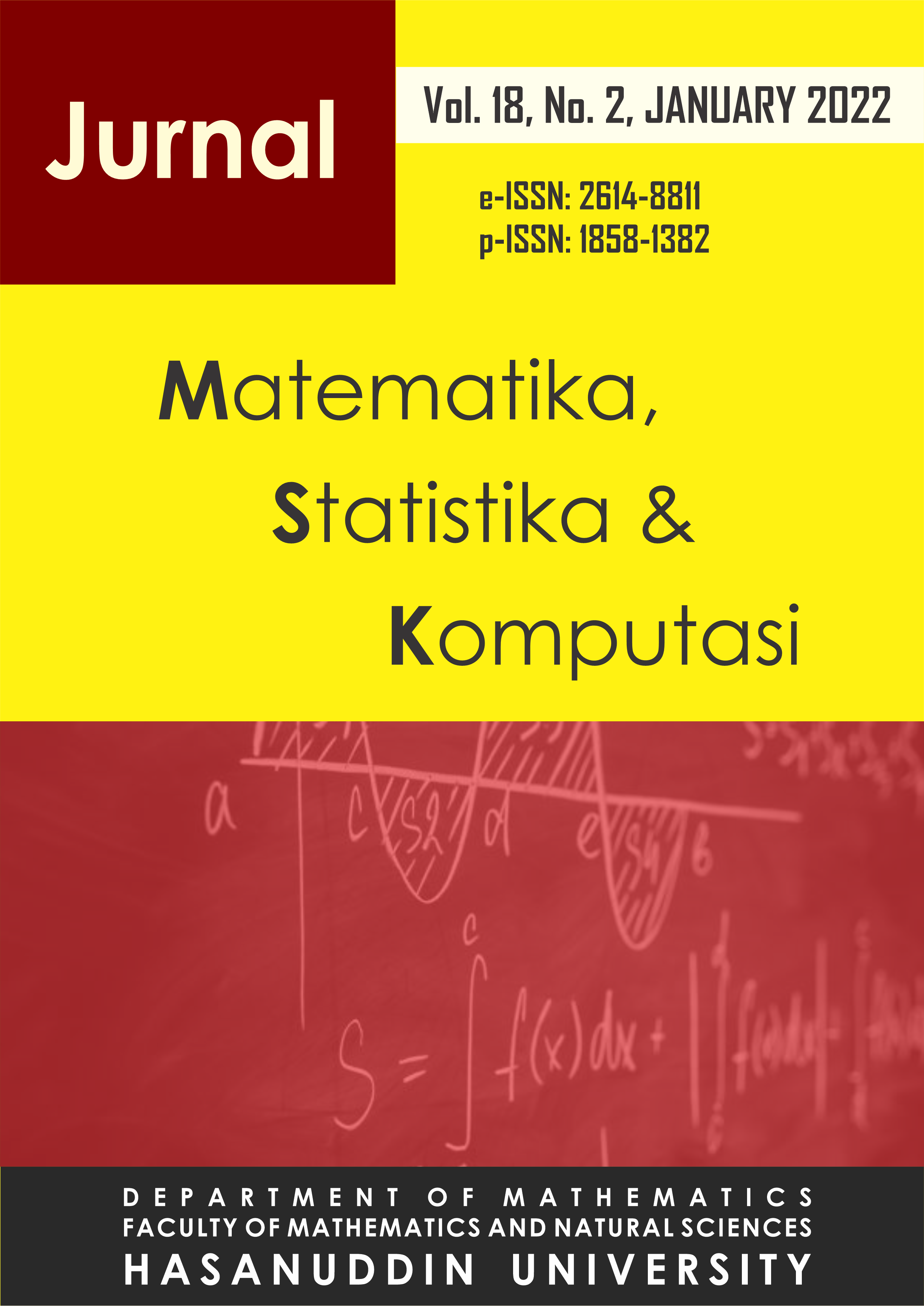Application of the Autoregressive Integrated Moving Average Exogenous (ARIMAX) with Calendar Variation Effect Method for Forecasting Chocolate Data in Indonesia and the United States
DOI:
https://doi.org/10.20956/j.v18i2.18460Keywords:
Chocolate, ARIMAX, MAPE, Calendar VariationAbstract
Forecasting chocolate consumption is required by producers in preparing the amount of production each month. The tradition of Valentine, Christmas and Eid al-Fitr which are closely related to chocolate makes it impossible to predict chocolate by using the Classical Time Series method. Especially for Eid al-Fitr, the determination follows the Hijri calendar and each year advances 10 days on the Masehi calendar, so that every three years Eid al-Fitr will occur in a different month. Based on this, the chocolate forecasting will show a variation calendar effect. The method used in modeling and forecasting chocolate in Indonesia and the United States is the ARIMAX (Autoregressive Integrated Moving Average Exogenous) method with Calendar Variation effect. As a comparison, modeling and forecasting are also carried out using the Naïve Trend Linear, Naïve Trend Exponential, Double Exponential Smoothing, Time Series Regression, and ARIMA methods. The ARIMAX method with Calendar Variation Effect produces a very precise MAPE value in predicting chocolate data in Indonesia and the United States. The resulting MAPE value is below 10 percent, so it can be concluded that this method has a very good ability in forecasting.
References
Anggraeni, W., Retno A.V., Yuni D.K., 2015. Performance Comparisons Between Arima and Arimax Method in Moslem Kids Clothes Demand Forecasting: Case Study. Procedia Computer Science 72 (2015), 630 – 637.
Farih, N.L., Irma F., Madona W., 2019. Prediction of the Number of Ship Passengers in the Port of Makassar Using ARIMAX method in the Presence of Calendar Variation. Indonesian Journal of Pure and Applied Mathematics, Vol. 1, No. 1 (2019), pp. 57-67.
Hanim, Yulia Masnunah, 2015. Penerapan Regresi Time Series dan ARIMAX untuk Peramalan Inflow dan Outflow Uang Kartal di Jawa Timur, DKI Jakarta dan Nasional. Institut Teknology Sepuluh Nopember.
Lee, M. H., Suhartono, dan Hamzah, N.A., 2010, Calendar variation model based on ARIMAX for forecasting sales data with Ramadhan effect. Proc. RCSS’10, Malaysia, 349-361.
Purnama, D.I 2020. Model Hybrid Seasonal Autoregressive Integrated Moving Average (Sarima)-Support Vector Regression (Svr) Dan Penerapannya Pada Harga Gabah Nasional. Tesis : Universitas Padjadjaran, Fakultas Matematika dan Ilmu Pengetahuan Alam / Statistika Terapan.
S.Makridakis, S. C.Wheelwright dan V. E. McGee, 1999. Metode dan Aplikasi Peramalan Jilid 1 Edisi Revisi (terj.), Alih Bahasa: Hari Suminto, Jakarta: Binapura Aksara.
Spillane, J. J. 1995. Komoditi kakao: peranannya dalam perekonomian Indonesia. Cet. 1. Yogyakarta: Kanisius.
Wei, W.W.S. 2006. Time Series Analysis: Univariate and Multivariate Methods, Second Edition. New York : Pearson Education.
Utama, Made Suryana, and I. Gusti Putu Nata Wirawan, 2014. Model Box-Jenkins dalam Rangka Peramalan Produk Domestik Regional Bruto Provinsi Bali. Buletin Studi Ekonomi.
Wulansari, E. R., dan Suhartono, 2014. Peramalan Netflow Uang Kartal Dengan Metode ARIMAX dan Radial Basis Function Network (Studi Kasus Di Bank Indonesia). Jurnal Sains dan Seni POMITS. No.2, pp. 73-78.
Yudaruddin, Rizky, 2019. Forecasting untuk Kegiatan Ekonomi dan Bisnis. RV Pustaka Horizon.
Downloads
Published
How to Cite
Issue
Section
License
Copyright (c) 2021 Author and publisher

This work is licensed under a Creative Commons Attribution 4.0 International License.

This work is licensed under a Creative Commons Attribution 4.0 International License.
Jurnal Matematika, Statistika dan Komputasi is an Open Access journal, all articles are distributed under the terms of the Creative Commons Attribution License, allowing third parties to copy and redistribute the material in any medium or format, transform, and build upon the material, provided the original work is properly cited and states its license. This license allows authors and readers to use all articles, data sets, graphics and appendices in data mining applications, search engines, web sites, blogs and other platforms by providing appropriate reference.







